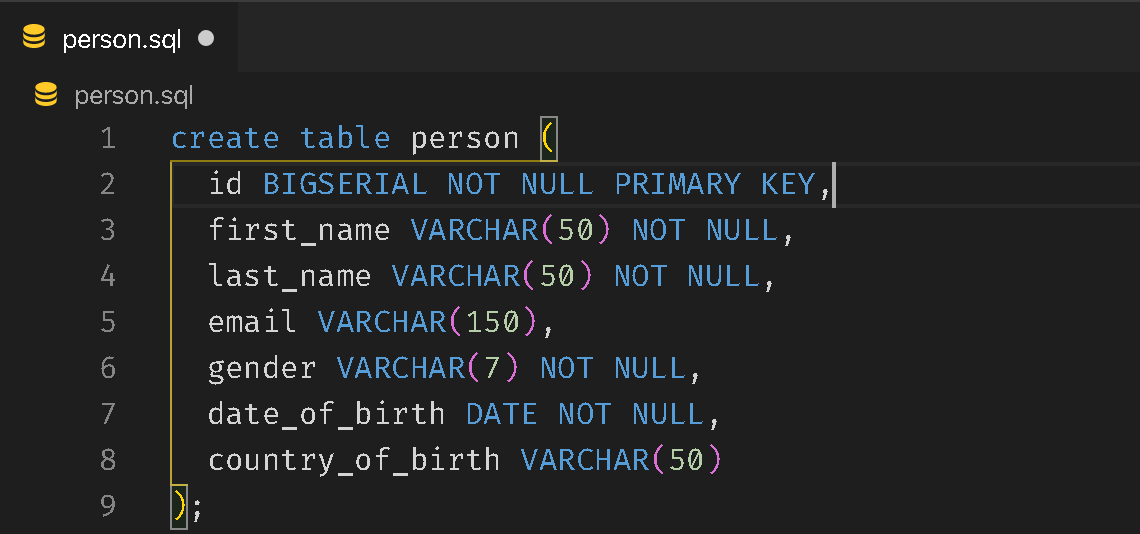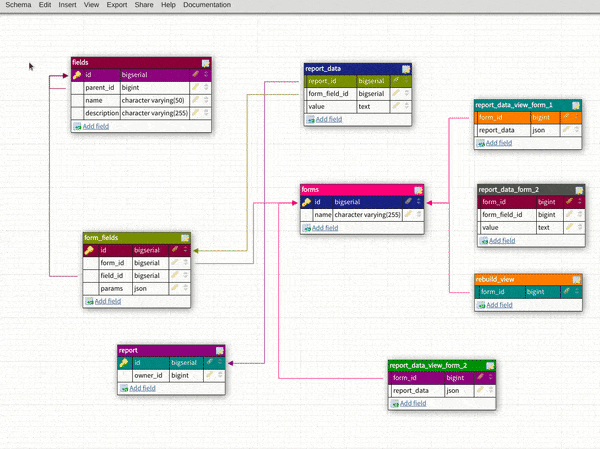

INSERT INTO Students (FirstName, LastName, Age) VALUES ('Aakash', 'Roy', 25) INSERT INTO Students (FirstName, LastName, Age) VALUES ('Rahul', 'Kumar', 24) After making the table, you will use the INSERT INTO command to add rows without providing the ID column’s value. In the example below, you will use the CREATE TABLE command to create a Students table and apply PRIMARY KEY and AUTO_INCREMENT to the ID column. By default, it starts with the number one and increases the value by one for each new record. In the MySQL server, it applies an auto increment field with the keyword AUTO_INCREMENT. You will have to create a Students table in all the DBMS and set auto increment in SQL.
#Bigserial sql how to#
You will be going through some primary DBMS systems and look at how to set up an auto increment column. Several databases support SQL auto increment fields. Now, since you know what the SQL auto increment field does, let’s set it up to automatically generate unique numbers for the records you enter in the database table. However, it can also be used for the UNIQUE constraint columns. This field is often used as the PRIMARY KEY column, where you need to provide a unique value for every record you add. The auto increment in SQL is a feature that is applied to a field so that it can automatically generate and provide a unique value to every record that you enter into an SQL table. That’s where auto increment in SQL comes in to play its part. Besides the memory issue, providing a unique number to all the records is also a tedious task. But, when it comes to enormous databases, you might forget the last unique number you entered, or merely include the same number twice as it isn’t easy to remember everything. You might be able to do it manually to a limited extent. For instance, a column of the table with a PRIMARY KEY or UNIQUE constraint will always require a new number. "The data type (bigserial) is not supported for current client/server configuration.While working with vast databases in SQL, several tables and data fields will require unique numbers.
#Bigserial sql update#
When I try to update the Datawindow’s SQL manually, I got this Powerbuilder error: I was able to create these connections using these PB Drivers, but I’m not able to create a Datawindow properly for this table, once it’s created. So, when I’m trying to create a new ODBC connection in PowerBuilder, I’m not able to see this Data Source in the dropdown list, so there is no way to create a profile, I tried other options for Informix which are I10 Informix v10.x|v12x and IN9 Informix v9.x. I created an ODBC connection using Informix 4.10 64-bit and I called Grace64 and I’m able to use it for queries with no issues Having updated you with our main issue, let’s get back to PowerBuilder matter: Once we upgrade the driver, we are able to run any query.
#Bigserial sql install#
So, initially we were working with Informix SDK 2.90 32-bit and we had to install SDK 4.10 64-bit so our Query tool is able to see the new field, Otherwise we have the following message: "The data type (bigserial) is not supported for current client/server configuration."

To do this, we had to change the SDK from 32-bit to 64-bit.

#Bigserial sql serial#
The reason for this change is we are in need to change a datatype field in a table from SERIAL to BIGSERIAL. I’m planing to migrate and testing the new version of PowerBuilder, 2017-R3.Ĭurrently we have version 8.0 installed and we want to migrate our application to the latest version.


 0 kommentar(er)
0 kommentar(er)
